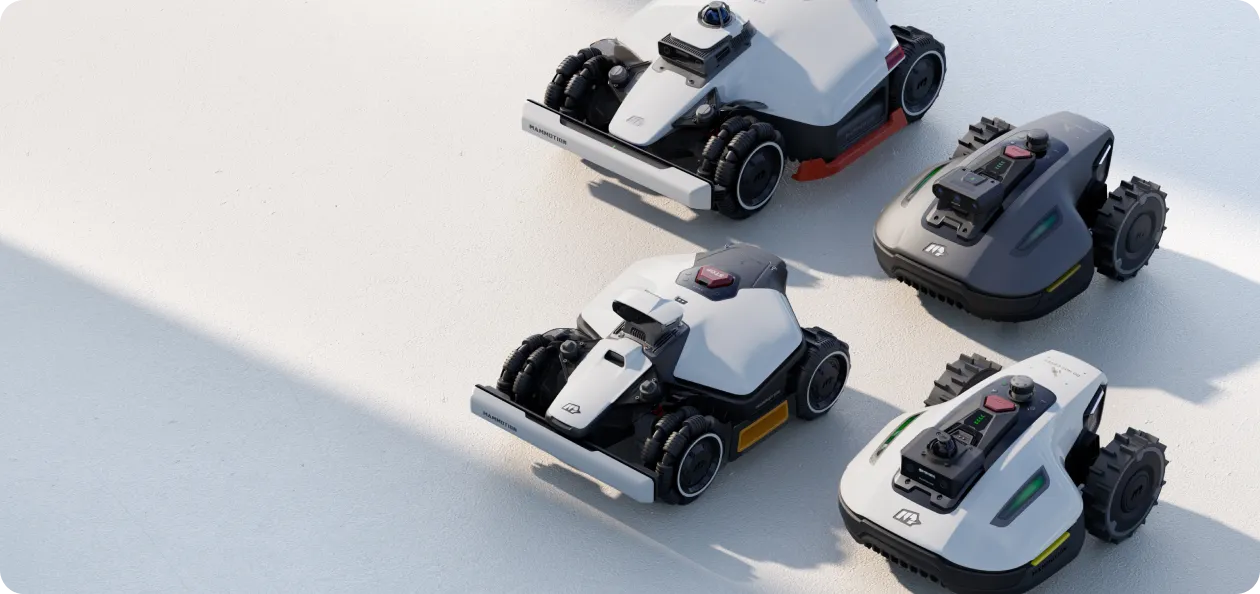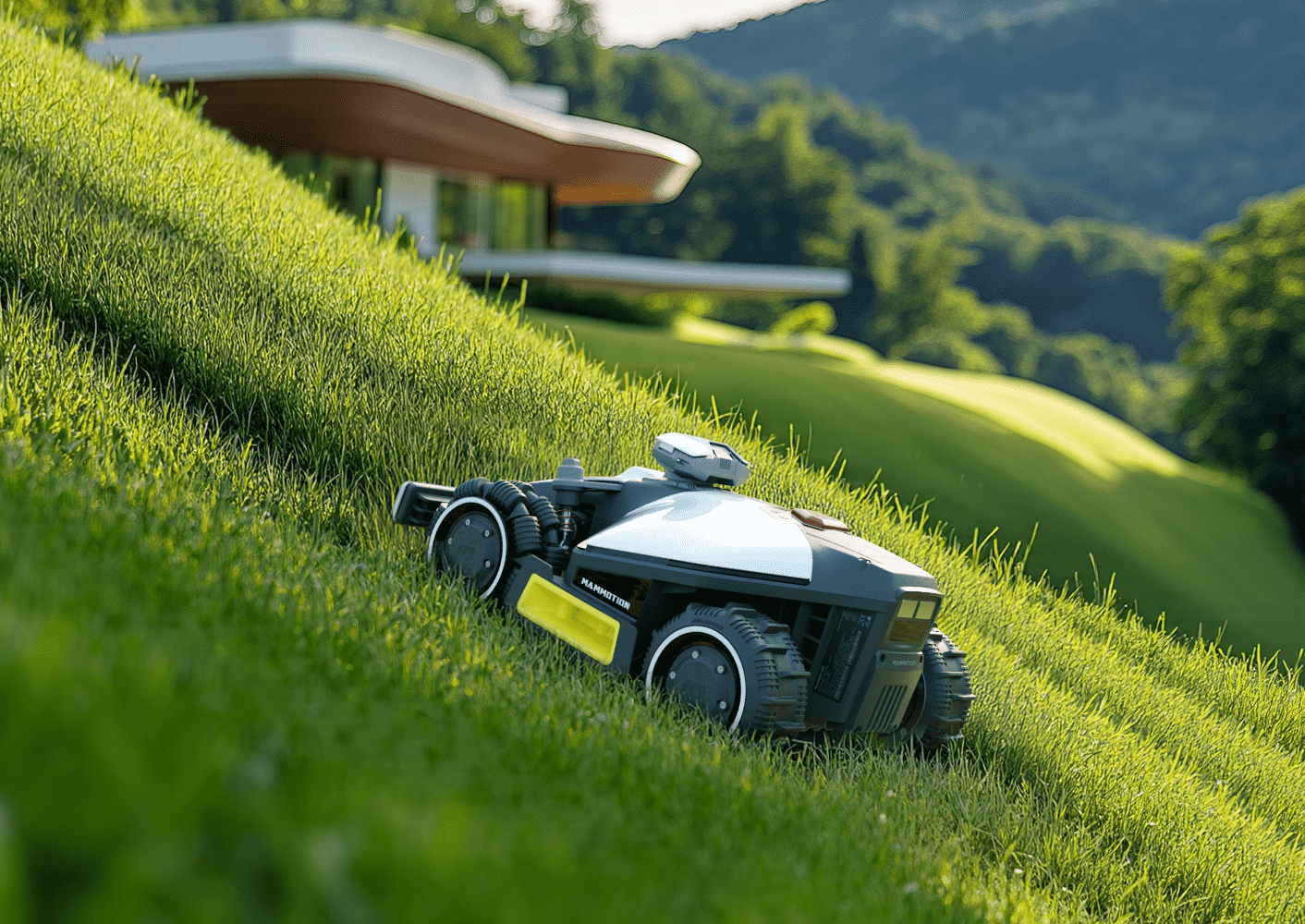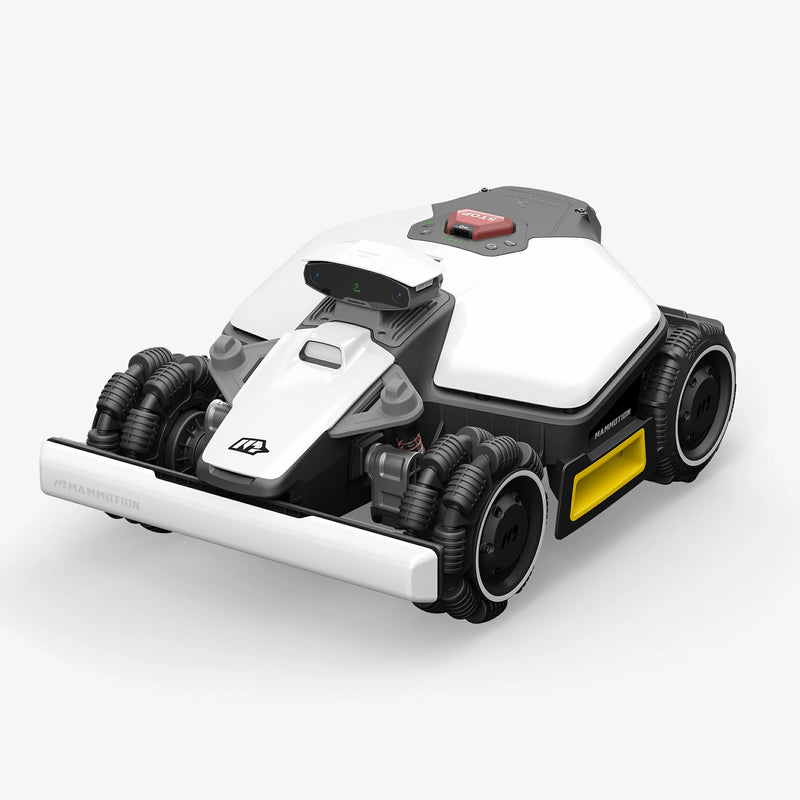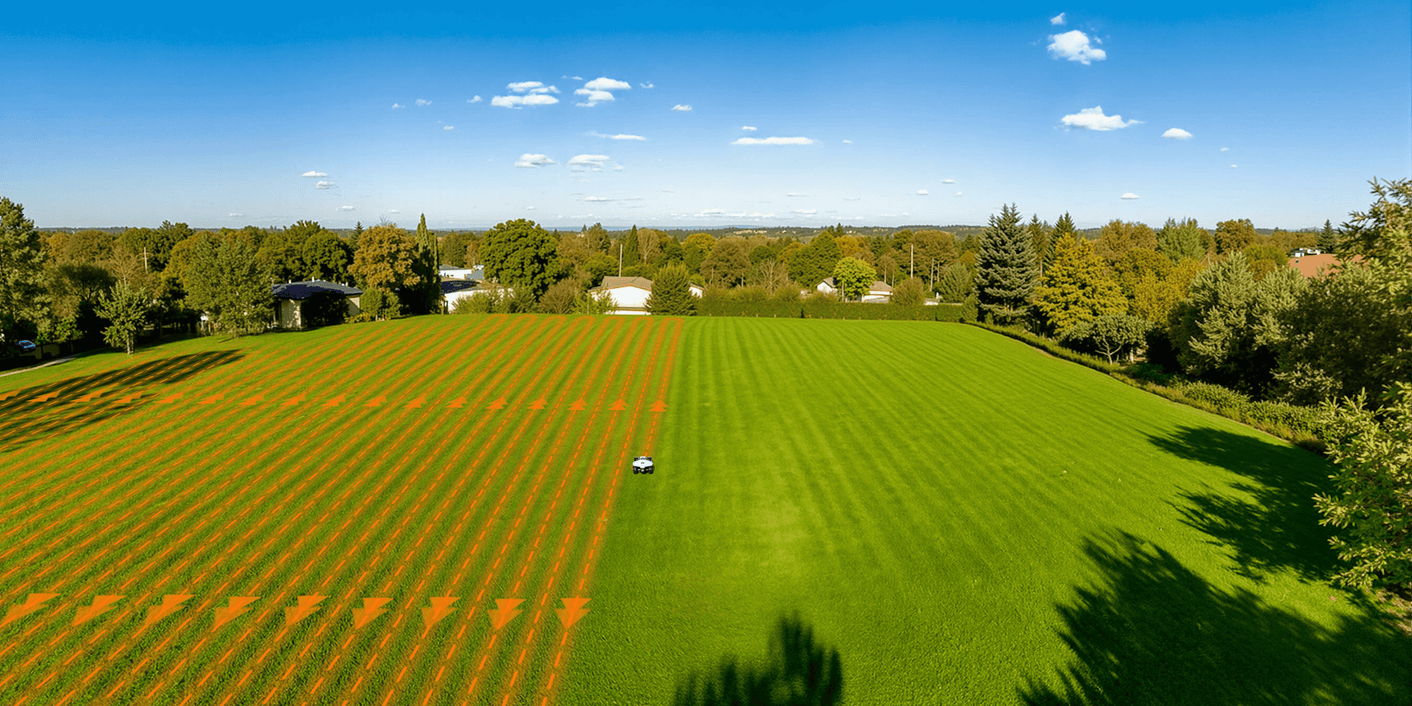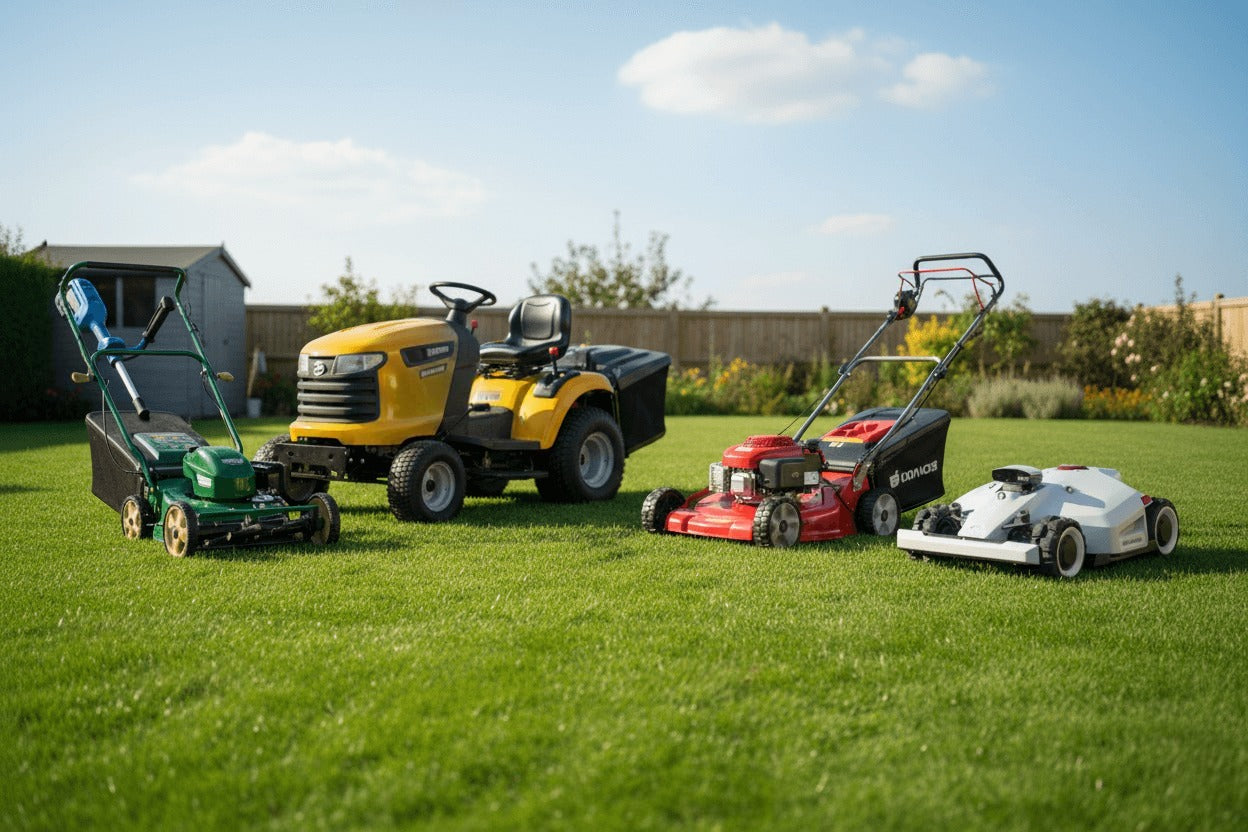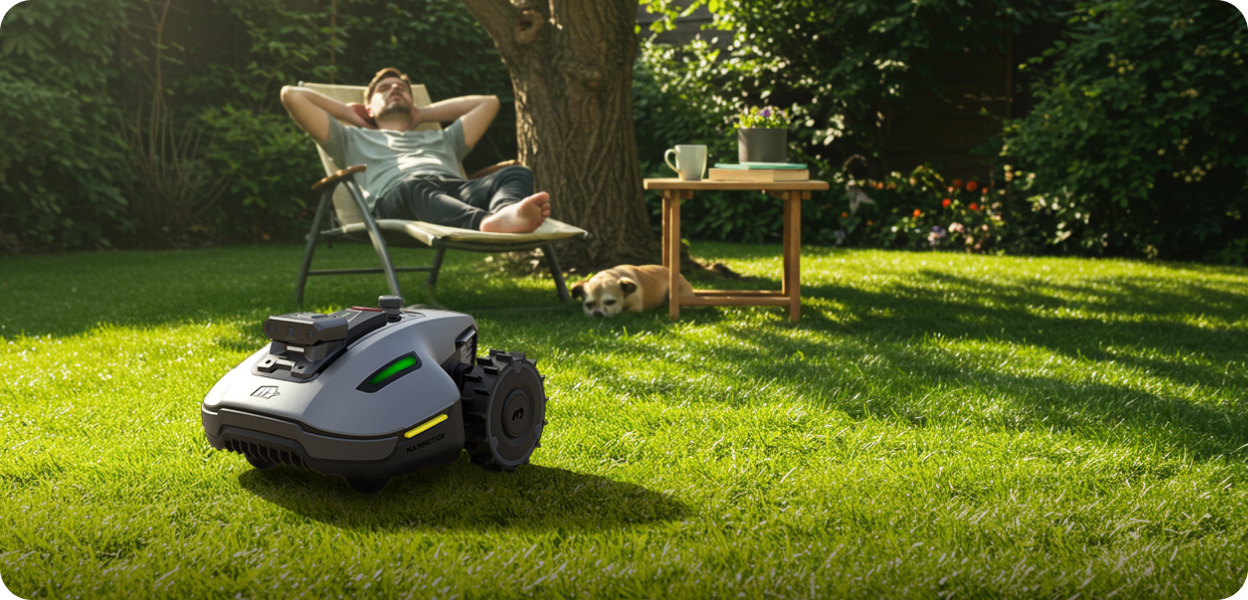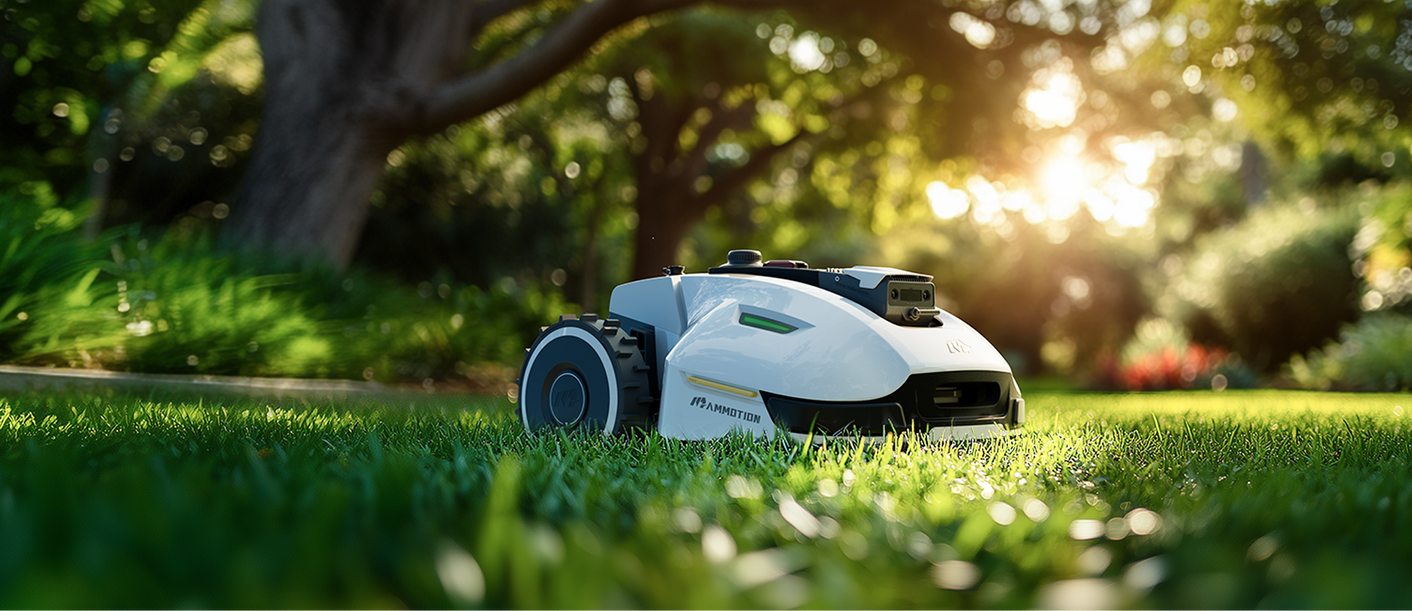If you’ve ever watched a robot mower get stuck halfway up a hill or spin its wheels on damp grass, you already know: not all drive systems are created equal. While most buyers focus on battery life, cutting width, or app features, few realize that the way a mower moves—AWD, FWD, or RWD—can make or break your lawn care routine. The right drive type determines how well the mower navigates slopes, avoids getting stuck, handles tight turns, and maintains cutting consistency over time. And if you choose wrong, no amount of smart tech will save you from frustration.
This article breaks down the real-world differences between AWD, FWD, and RWD robot lawn mowers—so you can buy smarter, mow better, and stop babysitting your robot.
What are AWD, FWD, and RWD in Robot Lawn Mowers?
Robot lawn mowers may look similar on the outside, but what powers them underneath determines how they perform in the yard. Just like cars, robot mowers use one of three drive systems to move: All-Wheel Drive (AWD), Front-Wheel Drive (FWD), or Rear-Wheel Drive (RWD). Each configuration affects how the machine handles slopes, turns, and obstacles—and how much lawn you can realistically cover without getting stuck. Here’s what each drive type means:
AWD (All-Wheel Drive): Power to All Wheels
AWD robot mowers deliver torque to all four wheels at once, allowing them to climb steep slopes, move over wet or uneven surfaces, and maintain traction in tight spots. This makes them ideal for hilly or complex lawns. The better ones on the market are like the Mammotion LUBA 2 AWD robot lawn mower.
FWD (Front-Wheel Drive): Pulling From the Front
FWD models rely on their front wheels for movement and steering. They tend to be lightweight and maneuverable, especially on flat or mildly contoured lawns, but they can struggle with grip on inclines.
RWD (Rear-Wheel Drive): Pushing From Behind
RWD systems send power to the rear wheels, pushing the mower forward while the front wheels steer. This creates a good balance between traction and simplicity, making RWD a solid choice for moderately sloped or obstacle-rich lawns.
AWD (All-Wheel Drive): Built for Slopes and Uneven Terrain
If your lawn includes steep inclines, uneven terrain, tree roots, or slippery patches, then AWD (All-Wheel Drive) isn’t just helpful—it’s essential. Unlike FWD or RWD mowers that rely on just two wheels for propulsion, AWD robot mowers send power to all four wheels. This allows them to climb slopes as steep as 35%–60%, handle rough or muddy ground without hesitation, and maintain cutting consistency even in unpredictable terrain.
For homeowners with complex yards, AWD means less manual intervention—no need to rescue a stuck mower every other day or worry about it losing grip during wet conditions. Many models like the Mammotion LUBA 2 AWD, which can climb for 80% slope, are better than most AWD robot lawn mowers.
Yes, AWD robot mowers are more expensive, often heavier, and may consume more power. But for lawns that challenge weaker systems, AWD isn’t a luxury—it’s the only reliable solution. But you still need to consider the pros and cons of AWD robot mowers before you buy.

FWD Robot Mowers: Budget-Friendly and Maneuverable—With Limits
Front-Wheel Drive (FWD) robot mowers are popular among first-time buyers—and for good reason. They’re typically more affordable, lighter in weight, and easier to maneuver around flower beds, small trees, and garden paths. By pulling from the front wheels, FWD mowers often make tighter turns than their RWD or AWD counterparts.
That said, their biggest strength is also their biggest weakness. On uneven ground or moderate slopes, the front wheels can lose traction easily, especially when the mower's weight shifts backward. This means they may struggle to maintain consistent grip when moving uphill or over soft, damp grass.
If you have a relatively flat lawn with few obstacles and are looking for a cost-effective, low-maintenance option, FWD mowers could serve you well. Just be aware: once slopes or wet zones enter the equation, FWD systems may begin to fall short—literally.
RWD (Rear-Wheel Drive): A Balance of Power and Simplicity
Rear-Wheel Drive (RWD) robot mowers tend to fly under the radar—but they’re often the most balanced choice for homeowners with moderately complex yards. Unlike FWD models, RWD units push from the rear, providing better weight distribution and more stable forward movement, especially when climbing gentle slopes or traversing uneven surfaces.
They may not handle steep terrain like AWD machines, but they also avoid the traction issues that FWD mowers face when front wheels lift slightly on inclines. Many RWD robot mowers, such as Robomow’s RX series, are designed with this hybrid use case in mind: modest hills, a few obstacles, and a focus on consistent cutting without over-engineering the drive system.
The tradeoff? RWD models typically have a larger turning radius, making them less agile in tight spaces. But for medium-sized, slightly sloped lawns, RWD offers a solid balance of power, efficiency, and cost-effectiveness—without the complexity or price tag of AWD.
Performance Comparison Table: AWD vs FWD vs RWD
Choosing the right drive type isn’t about picking the “best”—it’s about picking the best for your yard’s specific needs. To make the decision easier, here’s a head-to-head breakdown of how AWD, FWD, and RWD robot lawn mowers stack up in real-world performance:
|
Feature / Capability |
AWD |
FWD |
RWD |
|
Traction on Slopes |
Up to 80% incline |
Handles flat to mild slopes |
Moderate inclines (up to ~20%) |
|
Terrain Handling |
Excellent on uneven/wet ground |
Limited to even surfaces |
Handles mild bumps, roots |
|
Turning Radius |
Average |
Very tight turns |
Wider turns |
|
Obstacle Navigation |
Handles complex layouts well |
May struggle with resistance |
Stable but less nimble |
|
Battery Efficiency |
Lower due to higher power draw |
More efficient on easy lawns |
Balanced consumption |
|
Maintenance |
More parts = more upkeep |
Simple, fewer issues |
Moderate maintenance |
|
Typical Price Range |
$$$ High-end |
$ Budget-friendly |
$$ Mid-range |
Which Drive Type Is Best for Your Lawn?
Now that you understand how each drive system performs, it’s time to apply that knowledge to your own backyard. Here's how to match your lawn type to the right robot mower drive system:
For Sloped or Hilly Yards
Go with AWD. If your property has slopes steeper than 30%, uneven grading, or any kind of erosion-prone area, AWD is non-negotiable. It’s designed for grip, power, and reliability. Get more info about how to choose an AWD robot mower here.
For Flat, Suburban Lawns
FWD is ideal. If your lawn is mostly flat, open, and free of thick roots or deep ruts, a front-wheel drive mower gives you excellent value, fast movement, and efficient cutting with minimal fuss.
For Mixed Terrain or Light Obstacles
RWD hits the sweet spot. If your yard has gentle slopes, a few flower beds, maybe some trees or light hills, rear-wheel drive gives you the perfect blend of traction and simplicity.
Bottom line? Choose the system that best matches your terrain—not just your budget. A poor match will cost you more time and frustration than any price tag ever could.
Are AWD Mowers Worth the Higher Cost?
At first glance, AWD robot mowers seem expensive—and they are. But cost alone doesn’t tell the full story. When you factor in long-term usability, reduced manual intervention, and consistent performance in tough terrain, AWD models often return far more value than their upfront price suggests.
Think about it: a cheaper FWD mower that constantly gets stuck, misses patches, or needs rescuing ends up wasting your time and energy, which defeats the point of automation. Meanwhile, AWD systems—with better traction, smarter obstacle handling, and fewer interruptions—offer a smoother, hands-off mowing experience over the years.
Yes, maintenance may be slightly higher due to more moving parts. But if your lawn demands AWD, no other drive type will deliver true reliability. Also, the Mammotion Luba mini AWD robot lawn mower will be a good choice if you have a small and sloped yard.
Drive type isn’t a gimmick. It’s a foundational feature that shapes how well your robot mower integrates into your daily life—and whether it feels like an upgrade or a chore. But AWD robot mowers aren’t always the smartest buy, you still should consider your yard situation.
Final Thoughts: Choose Based on Lawn, Not Hype
When it comes to robot lawn mowers, the drive system is not just a spec—it’s a long-term success factor. Whether you're dealing with steep hills, navigating tight garden paths, or just trying to get through a mow without babysitting your machine, the right drive type makes all the difference.
Think of it like this: you don’t choose a pickup truck for city commuting, and you don’t choose a compact car for off-roading. Matching your mower’s drive system to your yard's reality ensures that the investment pays off not just in year one, but for seasons to come.
In short: AWD, FWD, or RWD—there’s no one-size-fits-all. But there is a best fit for you. And finding it is the key to effortless, consistent lawn care.
Frequently Asked Questions
1. What is the difference between AWD, FWD, and RWD in robot mowers?
AWD powers all four wheels for maximum traction, FWD pulls from the front for maneuverability on flat terrain, and RWD pushes from the back for better balance on moderate slopes.
2. Are AWD robot mowers really worth the extra cost?
Yes—if you have a sloped, uneven, or complex lawn. AWD provides traction and consistency that lower-cost models can't deliver, saving time and frustration in the long run.
3. Can I use a FWD robot mower on a sloped lawn?
Only if the slope is mild (under 10% incline). FWD mowers often lose traction when climbing, especially on wet or uneven ground.
4. Is RWD better than FWD for most suburban lawns?
For lawns with light slopes or scattered obstacles, yes. RWD gives better traction and stability without the complexity of AWD.
5. How do I know if my yard needs an AWD robot mower?
If your lawn has areas with more than 20% incline, loose soil, tree roots, or frequent wet spots—AWD is likely necessary for consistent, hands-free mowing.
6. Do AWD robot mowers use more battery?
Generally yes, due to higher power demand from all four wheels. However, this is often offset by reduced stops and fewer rescue interventions.
7. Are AWD models harder to maintain than FWD or RWD?
AWD units have more moving parts and weight, which can increase wear and maintenance needs over time—but most modern models are designed for minimal user upkeep.
8. Which drive system is best for small, flat lawns?
FWD is typically ideal: affordable, nimble, and efficient for well-maintained, level yards without challenging terrain.
9. Is turning radius affected by drive type?
Yes—FWD mowers usually have the tightest turning radius, RWD the widest, and AWD somewhere in between, depending on design.
10. What's the best drive type for a yard with both slopes and garden beds?
RWD offers the best compromise: enough power for light slopes, with smoother control around landscaping features. AWD may be better if slopes are steep.










